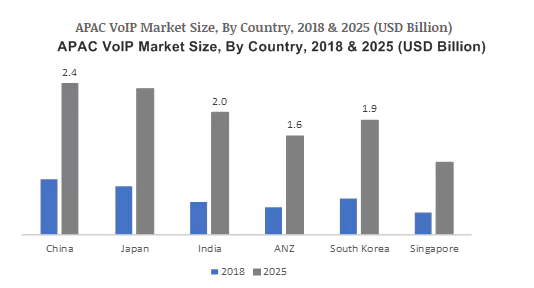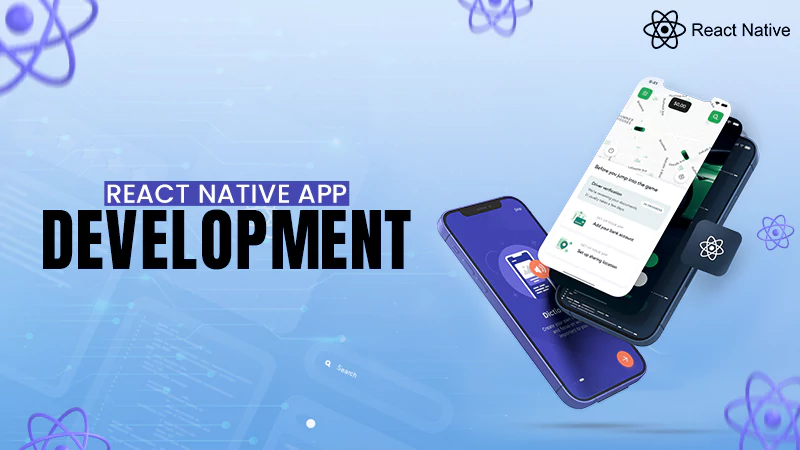What is a VoIP Phone & How Does It Work?
In a world filled with the marvels of disruptive and transformative technologies, the way we communicate has taken a new shift. A perfect example of innovations transforming communication is the Voice over Internet Protocol (VoIP).
VoIP has varied functionalities that are not limited to only placing calls. It provides valuable facilities and outbreaking marketing strategies applicable to small businesses and corporate environments. For small, medium, and large enterprises this technology is valuable, which explains why they have largely adopted it.
Indeed, the growth of the virtual calling system industry is nothing short of fascinating. According to Allied Market Research, the global mobile VoIP market stood at $49.2 billion in 2021.
Forecasts indicate it will soar to a staggering $327.5 billion by 2031. That is a compound annual growth rate (CAGR) of 21.1% from 2022 to 2031.
Now, you might be wondering: What then is this innovative, revolutionary technology called Voice over Internet Protocol Telephone?
This write-up aims to give you an overview of a Voice over Internet Protocol telephone, its role, advantages, and disadvantages in communications. Sit tight and learn!
What is a VoIP Phone?
VoIP is the short form for Voice over Internet Protocol. The phone uses the power of the internet to enable calling another person. It can sometimes be referred to as internet protocol (IP) or cloud-based telephony systems.
At its core, a VoIP phone is engineered to utilize IP network technology. In essence, this technology transforms analog audio into digital formations, thus making it possible to transmit virtually.
From the receiving end, the IP telephony will convert incoming digital call signals online back to standard telephone audio.
There are different types of virtual calling tools, ranging from hardware-based to software-based solutions. Even though these devices might look like ordinary phones, they work with different mechanics.
Each phone has a microphone and receiver that converts your voice to data packets, which are transmitted through the network virtually. The content is subsequently deciphered in the receiver’s end into an audible sound to be heard by the other party.
These phones are significant components of today’s connectivity, providing more than what other regular kinds of phones can offer. Such a technology can make calls online, and it, therefore, becomes suitable for business and ordinary users as well.
THINGS TO CONSIDER
The four most important components of VoIP are the Signalling Gateway Controller, Media Gateway, Media Server, and Application Server.
How Do VoIP Phones Work?
Digital data is transmitted using a packet-switching approach in Voice over Internet Protocol phones, whereby analog audio signals are transferred from the sender to the receiver and vice versa.
Simply put sound waves that form your voice are converted into digital information to allow the virtual use for call making and receiving.
Here is a breakdown of how VoIP phones work:
- Step 1- Packetization: When IP telephony receives digital content sent by another device, it divides it into many smaller information packets and then writes a specific address on each packet.
- Step 2- Data Transmission: These transformed data are forwarded to the router, acting as a gateway of communication within your local network and the internet through your broadband line.
- Step 3- Routing: The router receives the information and calculates the best route for their forwarding. The final path to this destination might go through several routers to determine the optimal path.
- Step 4- Packet Reassembly: The individual packets are reassembled at their intended destination, using the addressing information embedded within each packet, and are stitched back together according to the original sequence.
- Step 5- Conversion to Speech: For the IP telephony user on the receiving end, the information appears in the form of recognizable speech, transforming the digital data back into audible sound.
Features of VoIP Phones
VoIP phones, or Voice over Internet Protocol phones, have not only revolutionized the way we make calls but have also introduced a plethora of features that enhance the talking experience.
These features surpass traditional landline phones’ capabilities, making network calling an attractive choice for individuals and businesses. Let’s explore some of the key features that set these phones apart:
Portability
Voice over Internet Protocol enables excellent mobility, allowing users to make or take calls just about wherever they can access virtually. Your IP network number stays available when in the office, at home, mobile, etc., rendering it appropriate for telecommuting and wanderers.
Voicemail
The voicemail calling phones are of advanced technology. For example, they give your callers personalized messages, storing them for future listening on your phone or online via your emails or dedicated portal so that any calls of value are never lost.
Text Messaging
Several VOIP platforms also facilitate SMS texts, sending and receiving them for direct interaction among people.
Conference Calling
The virtual calling system is perfect for conferencing, where several people can participate in a cyber conference. Voice-over Internet protocol conference calls also have additional features such as screen sharing and collaboration tools that enhance effective cooperation within a team.
Video Calling
Video calling is also possible with online phone systems because it improves virtual communication by introducing another dimension—visual. This can be very beneficial in the absence of physical appearance during face-to-face meetings.
The graph below shows that despite alternative calling options, the VoIP market size across the world has maintained its consistent growth. Its market forecast shows a positive impact by 2025 because of low cost and easier long-distance communication.

Auto Attendant
Auto attendant is a digital simulation of a real-world receptionist who guides callers through a phone system’s options.
The automated attendant is one of the tools that can be used with virtual calling tools to help direct calls and offer information or assistance, thus making them more presentable to potential clients and customers.
Call Analytics
The calls made via IP network systems have extensive tracking records on the type of call duration, call volumes, and even call quality.
Such insights help companies do data-driven analysis that can be used in optimizing communication.
Call Recording
Voice-over Internet Protocol phones often come with a call recording function necessary for a business concerning quality control, training, and compliance requirements. Such recordings are accessed and retrieved whenever required; hence, communication is accountable and transparent.
Conclusion
Voice and video conversation has become more meaningful thanks to the innovation of VoIP phones. This phone’s features include portability, voice messaging, texting, conferences, etc., catering to different needs and locations.
The flexibility of the technology and the growth possibilities in VoIP also highlight its significance in the contemporary communication environment.
There will be other developments, especially with a rising number of people using IP network phones for business and personal communication.
This article has provided details of what an online phone system is and how it works. You can now implement this perfect technology for your communication needs.








